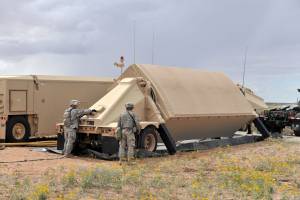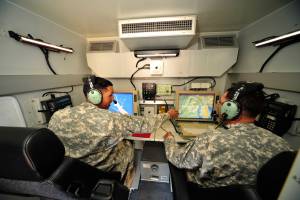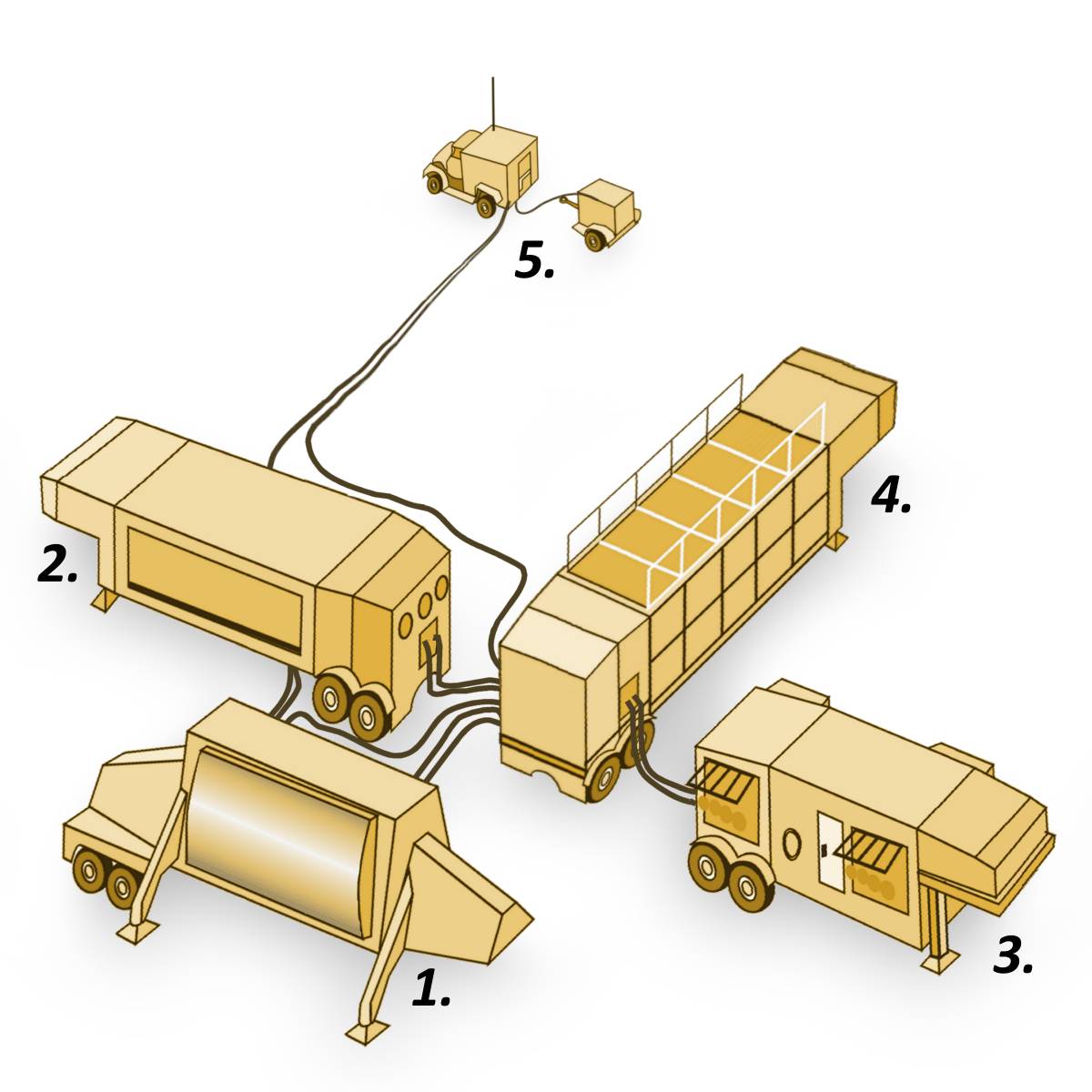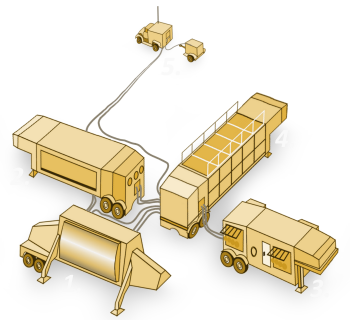AN/TPY-2
Description of the radar set, tactical-technical characteristics

Figure 1: AN/TPY-2 Terminal High Altitude Area Defense (THAAD) Radar
| Specifications | |
|---|---|
| frequency: | 8.55 … 10 GHz |
| pulse repetition time (PRT): | |
| pulse repetition frequency (PRF): | |
| pulsewidth (τ): | |
| receive time: | |
| dead time: | |
| peak power: | |
| average power: | |
| instrumented range: | 1000 km |
| range resolution: | |
| accuracy: | |
| beamwidth: | |
| hits per scan: | |
| antenna rotation: | static |
| MTBCF: | |
| MTTR: | |
AN/TPY-2
Raytheon designed and built the AN/TPY-2 radar for the Ballistic Missile Defense System and the Terminal High Altitude Area Defense (THAAD) weapon system drawing on extensive sensor knowledge from its X-Band “Family of Radars.” It is the world's largest ground/air-transportable X-Band radar. The AN/TPY-2 is a high-power, transportable radar designed to detect, track and discriminate ballistic missile threats at long distance and at very high altitude, including space. It plays a vital role in the Ballistic Missile Defense System, protecting the U.S., deployed forces and allies from ballistic missile threats and provides extended coverage and the ability to engage incoming missiles more efficiently.
The AN/TPY-2 radar provides a common mission capability:
- in Terminal-Based Mode (TBM) with the THAAD Fire Control Center in support of the THAAD weapon system, and
- in a Forward-Based Mode (FBM) with command, control, battle management and communications, enabling MDA's Ballistic Missile Defense System.
The radar uses a trailer-mounted, single-faced 9.2 m2 wideband phased-array antenna. In the antenna there are 72 transceiver modules in semiconductor technology, which supply a total of 25,344 antenna elements. The shape of the antenna pattern and the beam deflection is performed by a digital beamforming processor. The transmitters waveform uses linear frequency-modulated intrapulse modulation. The antenna unit is supported by an electronics unit and a cooling unit.
The electronic equipment unit houses radar control and signal/data processing equipment using modified software to provide acquisition and tracking of ballistic missiles of all ranges in the boost phase and the transition to the midcourse phase of flight. The system uses fibre optic datalinks as the communications medium. The radar and system components require a total of 2.1 megawatts of power to operate.
The AN/TPY-2 radar system elements include:
- the phased-array antenna
- the electronic equipment unit
- a 1.1 MW prime power unit
- a cooling equipment unit which provides cooling for the antenna array
- an operator control unit which contains operator consoles for operations, maintenance and communications monitoring (using an own power unit).
The AN/TPY-2 radar system is air-transportable by up to five C-17 aircrafts. The radar is proven and deployed in USA, Israel and Japan.

Figure 2: Interior View of TFCC Tactical Operations Station (TOS)

Figure 3: THAAD-site

